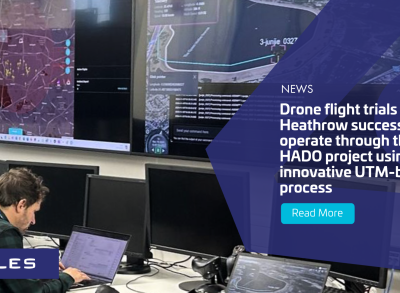The Key to Widespread UAS Commercialization? A Systems Integrator Can Tell You.

In other words, safety management – which is driven by risk reduction - is essential for UAS integration.
So far, early R&D work by an influx of new entrants has treated risk reduction as a problem to be solved in piece parts by software or counter-UAS providers. But risk reduction goes beyond the development of new technologies – it’s about the totality of how new systems and new technologies interact with each other in our existing airspace structure.
This is a systems integration challenge – balancing aviation-grade solutions to enable drone integration in controlled, uncontrolled, higher altitude or lower altitude airspace. It demands answers to complex systems integration concepts like future communications links, surveillance, mixed-use airspace, and increasing levels of automation.
As a global leader in new technologies for the aerospace, defense & security, digital identity, space and transportation, Thales has been a good steward of aviation standards for over 80 years, developing and integrating aviation communication, navigation, and surveillance (CNS) technologies globally.
We’re excited to be playing a pivotal role in building multi-use, egalitarian, and agnostic airspace management systems that make it simple and economical to perform safe, repeatable, and scalable commercial UAS and AAM (Advanced Air Mobility) operations.
We're bridging the gap between industry and the public sector; helping advance safety cases and expand drone usage on a broader scale; and working towards widespread implementation and commercialization.
The result? Infrastructure improvement, return on investment, job creation within legacy systems while integrating new technology.
Do you have a complex drone project? Let’s talk.




